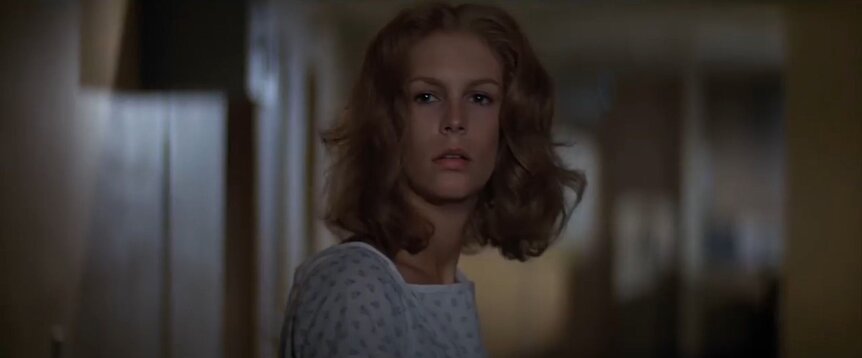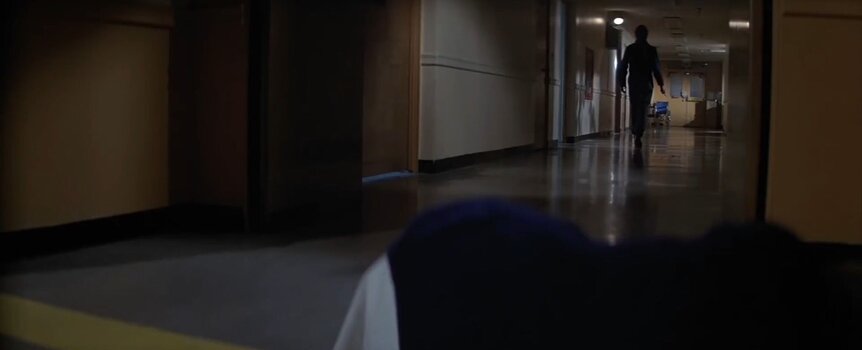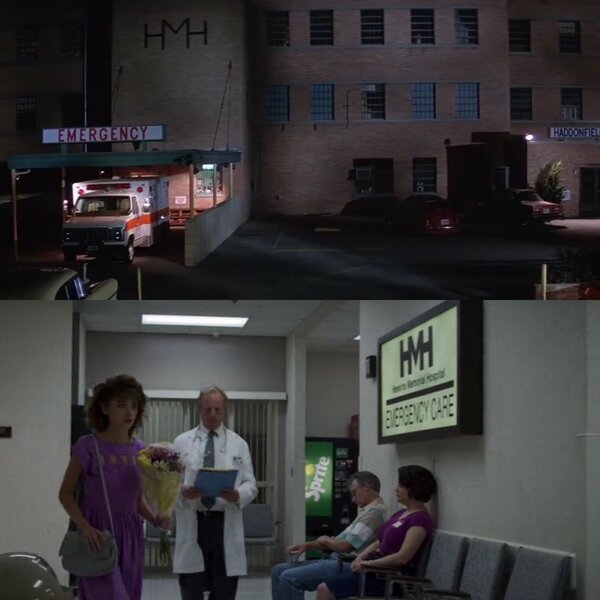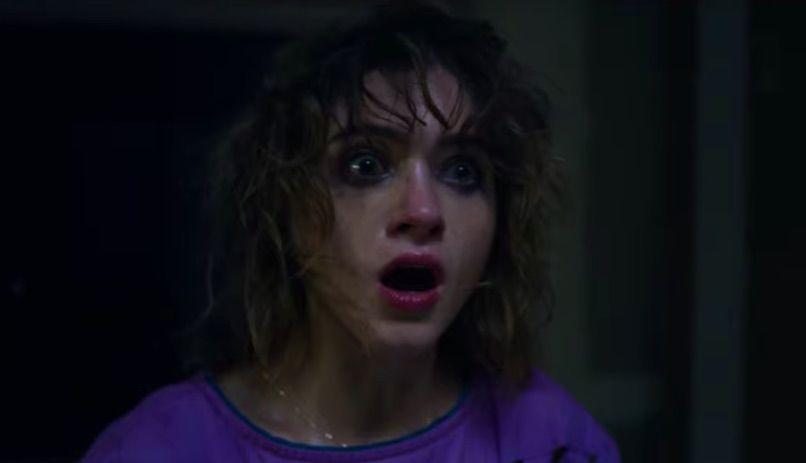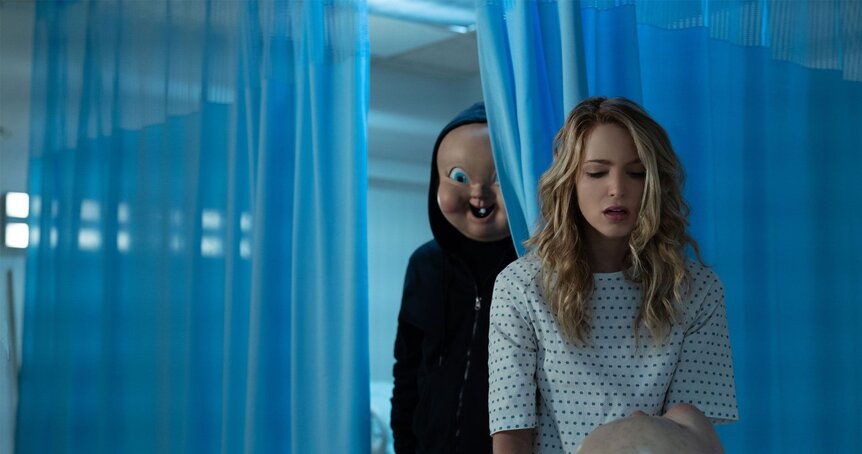Create a free profile to get unlimited access to exclusive videos, sweepstakes, and more!
Hospitals in horror, from Halloween II to Stranger Things
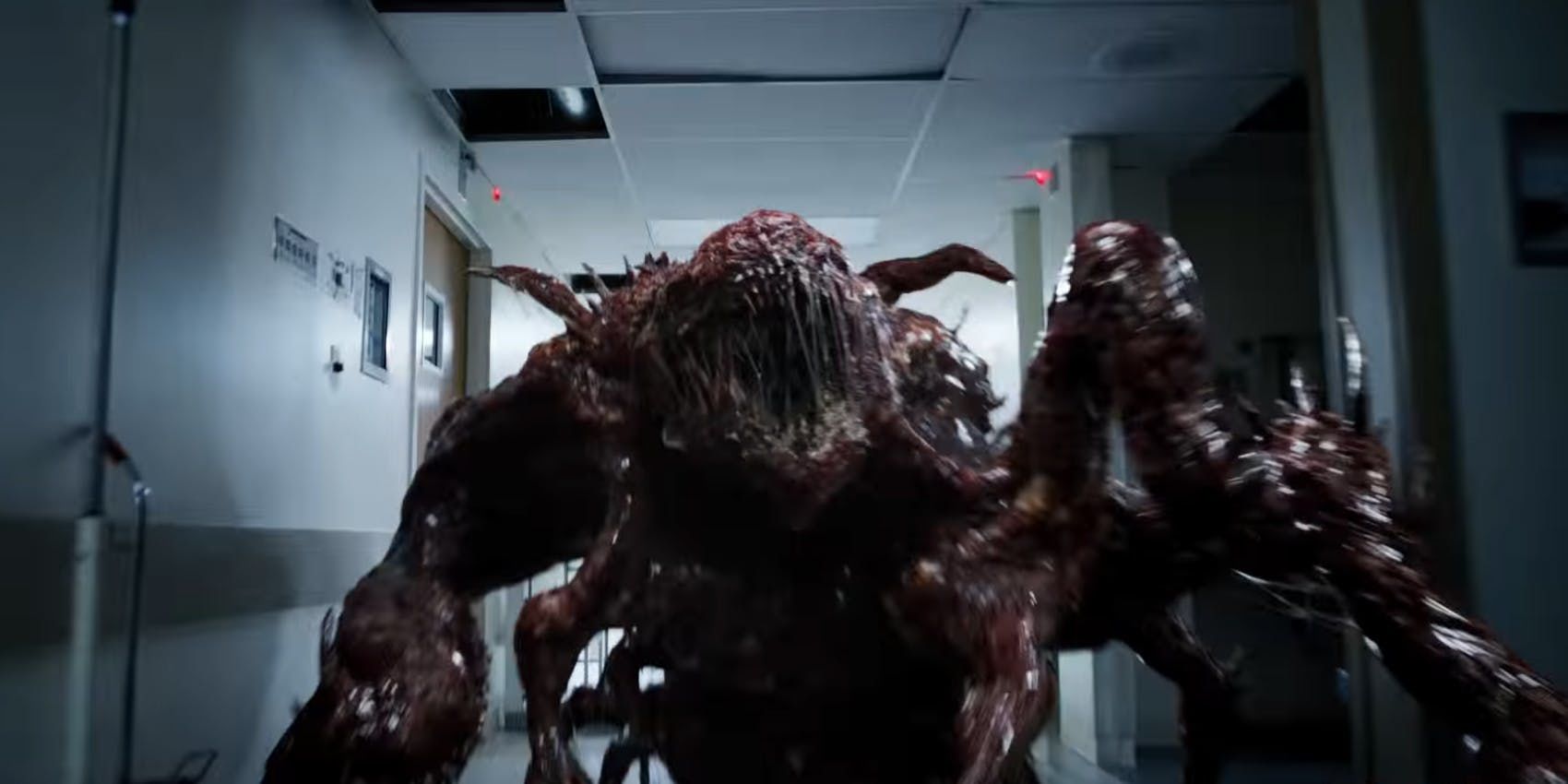
A horror movie can turn any location from a place of safety into a nightmare. Laurie Strode has experienced plenty of this in her many battles against Michael Myers, both in the original movie and in its subsequent sequels. Events that took place in the 1981 follow-up to John Carpenter’s Halloween have since been scrubbed from the timeline in the recent reboot; nevertheless, it is worth revisiting Laurie's hospital trauma to examine why this location is so scary and how it has influenced horror in 2019.
Hospitals probably don’t rank highly on a list of places where most people want to hang out in their free time. It's where you go to get better, but it is also a reminder of illness, injury, and death. A violent incident might be the reason why a person is a patient, but more often than not the initial incident will occur away from this particular location. Hospitals have security personnel, and police officers are never too far away, whether following up with a victim or dealing with a perpetrator. There is an expectation of safety, but unfortunately Michael Myers doesn’t play by the rules.
Halloween II begins where audiences last left Laurie after she escaped Michael, aided by Dr. Loomis. Laurie is physically injured and emotionally traumatized, and therefore the logical place for her to go is to hospital. Michael is nowhere to be seen, having escaped despite getting shot and falling from a decent height. Ultimately, Laurie is given no time to recuperate, as Michael has set his sights on his (plot twist!) sister, and a little thing like a gunshot wound won't slow down the Boogeyman.
Haddonfield Memorial Hospital is quite possibly the quietest medical center ever shown on screen; other than a handful of staff, the large facility is pretty much a ghost town. Medical TV procedurals and real-life experiences make this whole setup seem far less plausible than Michael’s ability to survive almost anything. Laurie is (unsurprisingly) not dealing well with her Halloween experience. Instead of listening to these concerns, her doctor's treatment plan involves a heavy sedative, putting Laurie in a fog for a lot of the movie. A hospital should be the safest place, but drugs can make you more vulnerable by reducing your ability to fight back.
Michael also weaponizes these drugs, but they aren’t the only medical tools on hand. There are plenty of sharp and blunt objects, which can be turned into instruments of death. Michael isn’t particularly fussy with his weapon choice, but he does enjoy creating a death tableau to increase shock value. For someone who walks so languidly, the way he quickly fashions these intricate works of murder art comes as a surprise. He utilizes the hospital space to his advantage, using the many gurneys, tubes, and scalpels to not only aid this rampage, but display his victims.
He isn't the only one improvising with weapons, as a hospital gives a potential victim the means to arm themselves so they can defend and escape. It doesn’t go so well for most of the nurses, doctors, and security guards on shift, sadly, but Laurie and Doctor Loomis turn a life-saving medical room into a death trap using canisters of ether. Laurie, of course, survives to tell the tale.
Cut to 2019 and the most overt reference to Halloween II comes courtesy of Stranger Things. The Duffer brothers are pretty liberal when it comes to the number of easter eggs littered in each episode, but notably Hawkins Memorial Hospital appears to share a logo designer with Haddonfield Memorial. The Hawkins medical facility is also just as light on the ground in terms of staff and patients, but Nancy Wheeler is there to investigate some very odd goings-on that had landed Mrs. Driscoll in hospital.She witnesses a very strange black vein reaction in the elderly woman — but again, no doctor or nurse comes to her aid despite the emergency nature of it all. The only person who appears to be on shift is the staff member at the nurses’ station, but she’s too busy chatting on the phone to notice anything sinister. When Nancy first visits Mrs. Driscoll in “The Sauna Test,” there are several background actors in hospital scrubs and lab coats populating the corridors, but they are nowhere to be seen in the following episode.
Part of this is explained away by the few victims the camera pans across when Nancy and Jonathan Byers run away from the blood-covered Tom and Bruce. Nancy and Jonathan’s newspaper boss and pervy co-worker have been mind-flayed, which makes them incredibly strong. When Nancy and Jonathan flee Mrs. Driscoll's room, they wisely choose the stairs over the elevator — a hospital as a setting for a horror means a guaranteed chase up or down an isolated stairwell — and end up on a wing that is undergoing construction. This is another classic hospital in horror trope, as it isolates both the potential victim and the killer. It also means there are no patients or medical staff to get in the way or act as a distraction. Despite the plastic sheets and ladders, there is still plenty of hospital equipment lying around, which is both beneficial and a hindrance to the couple.
Jonathan is attacked with a heavy metal stool, but Nancy puts a pair of surgical scissors to good use. This location also provides plenty of temporary hiding locations, as curtains and doors will only hold for so long. Gurneys and IV drip stands are also perfect (and not too heavy) objects to throw in the path of your attacker as you flee the scene. Nancy grabs a fire extinguisher as her choice of weapon, which in this case is probably going to be more effective than a scalpel. By smashing Bruce in the face, Nancy also incapacitates Tom, as there is a psychic link between the two. This allows Jonathan to grab the discarded scissors so he can plunge them into Tom’s throat.
As with Laurie, their monster isn’t vanquished after one fight. In a disturbing sequence, Tom and Bruce are reduced to a fleshy mess that fuses to make a huge monster. Nancy flees, ending up in a different room, one without anything to weaponize. It would appear the closest person to a Final Girl in Stranger Things has no way out when the monster screams in her face (an homage to Alien 3). Thankfully, Eleven is on hand to do her thing.
Happy Death Day 2U also employs the "ward that is under construction" device complete with useful tools and creepy killer-hiding plastic sheeting. Unlike other Final Girls, Tree dies at the hands of the killer. However, she also gets to live to tell the tale when the day resets. The hospital features in the first movie, but the sequel takes it (and Tree) to new heights. There are a number of suspects lurking, including Tree’s roommate and the prisoner who has been brought in for medical treatment. There is a stairwell chase, as well as a game of cat-and-mouse that takes place over several floors of this supposed life-saving facility.Medical instruments double as weapons, but as with Nancy, Tree grabs what is nearest to hand. Nope, she doesn’t wield an extinguisher; instead, she opts for something pointier, taking the ax from the "Break Glass in Case of Emergency" box. Tree saves her best weapon flexing for the climax (spoiler alert!) when an MRI machine doubles as a restraining (and organ crushing) device. This ingenious move is pure Final Girl.
The concept of the Final Girl was introduced by Carol J. Clover in Men, Women, and Chain Saws, and this text also explores the notion of the “Terrible Place.” Clover describes the Terrible Place as “most often a house or tunnel, in which victims sooner or later find themselves.” Adding, “The house or tunnel may at first seem a safe haven, but the same walls that promise to keep the killer out quickly become, once the killer penetrates them, the walls that hold the victim in.” This also applies to hospitals with security posted at the entrance. A person should feel safe in this location, but a scary movie flips this expectation on its head.
Horror has often turned to psychiatric or mental institutions, which plays on a number of fears (and uses more restraints and locked rooms), but as Halloween II, Stranger Things, and Happy Death Day 2U reveal, a regular hospital can be just as terrifying.
The views and opinions expressed in this article are the author's, and do not necessarily reflect those of SYFY WIRE, SYFY, or NBC Universal.
